Cosmic Star Heroine is a retro RPG that tells the story of Alyssa L’Salle, a talented secret agent, and her quest to save three inhabited planets from a government agency with totalitarian aspirations. As the story begins, Alyssa works for the Agency for Peace and Intelligence on the technologically-advanced planet Araenu. She is dispatched on a mission to the neighboring planet Rhomu to recover experimental technology from an abandoned research facility before it is found by the terrorist organization Astrea. The mission is a success, but Alyssa suspects the API has sinister plans for the recovered prototypes. She decides to steal the technology and go on the run. Pursued by the Agency she once served, Alyssa’s flight turns into a daring mission to save the inhabitants of an entire solar system from oblivion.

I can tell at a glance that Cosmic Star Heroine is inspired by some of the best-remembered classics of the 16-bit RPG era. Its varied environments, including decaying factories and laboratories, high-tech military bases and government offices, humid bogs teeming with alien flora and fauna, and lonely asteroids overlooking vistas of gas and stars, call to mind the lush pixel art environments of Chrono Trigger. The character designs are pulled more from the Final Fantasy series’ iconic style, especially as they appear in Final Fantasy VI. If I were to put Alyssa L’Salle and Terra Branford side-by-side, they would appear to be sisters, with huge eyes dominating most of their tall, noseless faces beneath messy haircuts.
The inspiration is more than graphical. Like the RPGs it mimics, Cosmic Star Heroine’s plot is rigorously predictable. Alyssa begins her journey working for the Agency for Peace and Intelligence. Surprise—the organization with the ominous name are the bad guys. The API is led by Director Steele, a perpetually-sunglassed man dressed in the finest Hugo Boss uniform circa 1939. Surprise—he’s the main villain. The API wages a clandestine war with the terrorist organization Astrea. Surprise—they’re actually noble rebels trying to stop Director Steele while minimizing collateral damage. There are only one or two plot twists that leave me genuinely surprised.

This is all on purpose. It’s an echo from an era of RPGs when simple plots and familiar character archetypes were not only the norm, but the only game around. Going back to those times of predictably straightforward stories, rebelliously idealistic protagonists, and despicably transparent villains is the entire point.
Cosmic Star Heroine’s plot being predictable doesn’t mean its setting and characters are not interesting. Alyssa’s own occupation as a secret agent is original in an RPG. The prologue sequence gets some mileage out of this role as she infiltrates an office building by climbing its side with a grappling hook. In battle, she uses a metal staff to dispatch thugs. When she is accosted by security drones, she reveals the staff can fire bursts of energy. Once the main plot gets underway she sadly becomes less a clandestine, gadget-driven character and more a generic leader-type, heading the charge into every situation without guile or subtlety.

Alyssa is supported on her journey by a large cast with diverse, unique skillsets. Chahn, another former API agent, is a gunmancer, a monk who can mentally conjure guns and fire them at their enemies. Some of her guns even heal her allies instead of kill her enemies. Psybe is an enormous cybernetic insect who can emit telepathic songs to heal party members or damage enemies every turn all while using his bulk to unleash powerful physical attacks. Orson hails from a species who have mastered resurrecting their consciousness from their deceased bodies, so he exists as lumpy ectoplasmic goo in glass-domed power armor. He wears a respectable jacket and tie over this suit for his job as a private detective and attacks with powerful elemental shots from a handgun. These are only my favorites from the gang Alyssa recruits to save the solar system.
In the end there may be too many supporting characters. It becomes difficult to keep track of them all and their varying skillsets. Several I use when required, like Finn, a rookie cop, and Clarke, a disco-dancing android with an uncanny resemblance to Freddie Mercury, then send them to the bench for the rest of the story. I only remember they exist when Alyssa stumbles across a new piece of equipment for them. They are forgotten just as quickly.
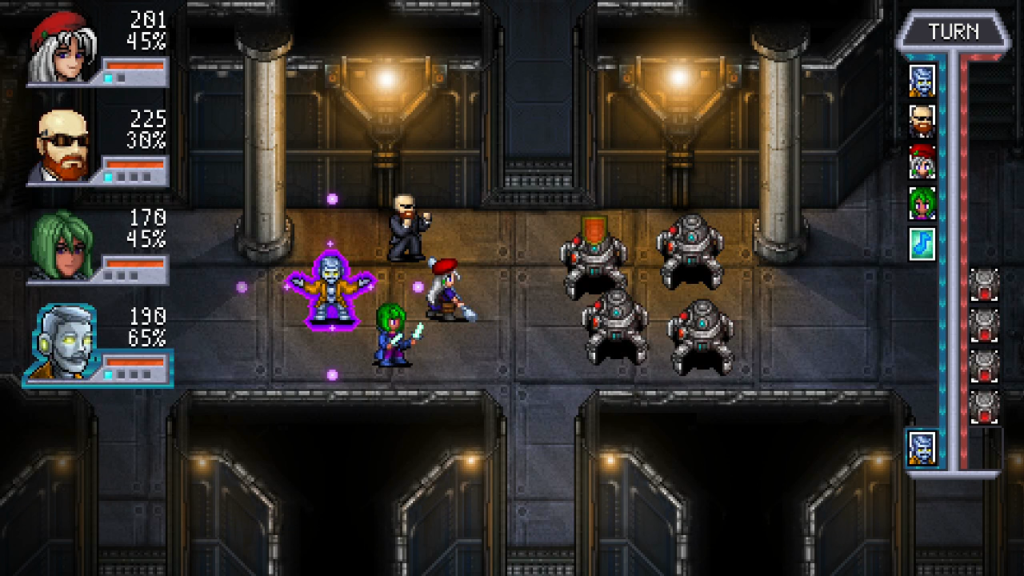
Even with this overflowing cast I have to give a compliment. In many RPGs it’s easy to ignore new party members by sticking to the ones I’ve been using since the start. Cosmic Star Heroine always puts Alyssa in situations where she is required to use the new party members for at least one part of the plot. This gives me a chance to understand each character’s unique combat mechanics and make team composition decisions based on informed preference instead of sticking with the same strategies from beginning to end. By the time I reach the final boss, the only teammate who has stuck around since the first mission is Chahn. Even then, I have transitioned her from healer to damage dealer.
Chahn is able to be this flexible in her party role because RPG combat is where Cosmic Star Heroine makes its most exciting design choices. I have experienced many RPGs that look like this. I have experienced none that play like it.
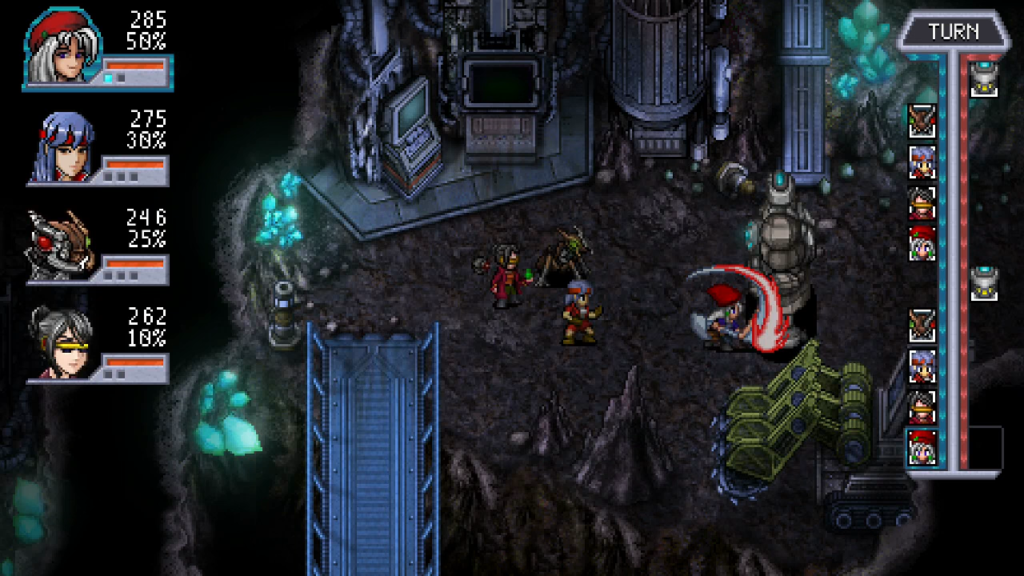
None of the party members have an ability as utilitarian as a basic “attack” command. This may look like a 16-bit RPG, but at no point do I breeze through a battle by holding down the confirm button to auto-attack through a fight. Every decision I make for the party requires careful consideration.
This is accomplished by giving each party member a long list of abilities with unique and varying effects and damage types. Many of Alyssa’s skills are focused on her staff weapon. Knock Out doesn’t deal much damage, but it can stun enemies and inflict Vulnerable, a debuff that makes its target take more damage for the rest of the turn. Lauren, a popular musician and Astrea member, attacks with musical instruments. She has abilities like Disable which strike an enemy with an electric guitar and applies the Disarm effect, reducing the damage that enemy deals for a turn.

Several of the characters are mechanically unusual, offering a toolset that defies other potential party members, to say nothing of what is typical in other RPGs. Aside from Psybe and his telepathic songs, there’s Arete, a blind research scientist. Instead of traditional attacks, Arete summons drones who attack after Alyssa’s party and their enemies have taken their turns. These drones provide a reliable source of passive damage every turn regardless of what Arete does, freeing her up to use skills or items on her allies or enemies.
There is no resource system. None of these abilities rely on mana, magic, skill points, stamina, or any other resource I can name. Seven skills can be equipped for battle and may be used as many times as I like, with one catch. Each time an ability is used, it is disabled until Recharged with the character’s eighth skill. Different party members have many varieties of this skill, but all have the same general effect: They make the user take less damage for the rest of the turn, and they reactivate all of their used abilities.

There are abilities which may be reused without Recharging, but I find them so unremarkable that by the halfway point I have cycled all of them out of each party member’s moveset. I never use them, so having them equipped is a wasted slot that could contain a different ability with more powerful and practical effects. Having to Recharge that ability each time it is used seems like a fair trade for sheer versatility.
All of these abilities offer innumerable and unorthodox strategies from different team compositions, and this is where Cosmic Star Heroine truly shines. Because of the Recharge mechanic, strategy is de-emphasized from what is typical in 16-bit RPGs—dealing as much damage as possible as fast as possible—to spending multiple turns synergizing character abilities to deal a huge burst of damage all at once.

A particularly effective tactic I discover early on is a good example of this team synergy. Each character has a Hyper meter which fills by one step each time they take a turn. When it is capped out, that character’s abilities will be more effective that turn, especially their damage abilities. Alyssa learns an ability called Inspire which increases the damage dealt by a party member by 40%. Chahn learns Focus, which makes her next Gunmancy skill target the entire enemy party.
I wait until the turn before Chahn’s Hyper meter fills out, then cast Inspire and Focus on her. On her next turn, I use Purification Torch, a powerful fire-aligned Gunmancy skill. Purification Torch is boosted by Chahn’s full Hyper meter, boosted again by Alyssa’s Inspire, and targets the entire enemy party because of Focus. By holding a few abilities until an opportune time, the party ends up dealing much more damage than they would using basic attacks. It takes a little more patience, preparation, and thought, but the results are deeply satisfactory.

There are dozens of strategies like the one I have described to be discovered and employed in Cosmic Star Heroine. Every possible combination of the eight characters has intriguing depth to be explored. If I’m playing on the higher Heroine and Super Spy difficulties, utilizing these deep tactics is the only way to succeed. Some enemies have so many hit points that trying to beat them without clever exploitation of mechanics can feel tedious and disheartening, though I would still describe the overall difficulty as mild.
The final and most unique flourish Cosmic Star Heroine brings to traditional RPG battling is its take on death. As party members perform abilities in combat, they accumulate Style. Style has unique effects on many abilities, but the most important advantage it confers is the ability to defy death.
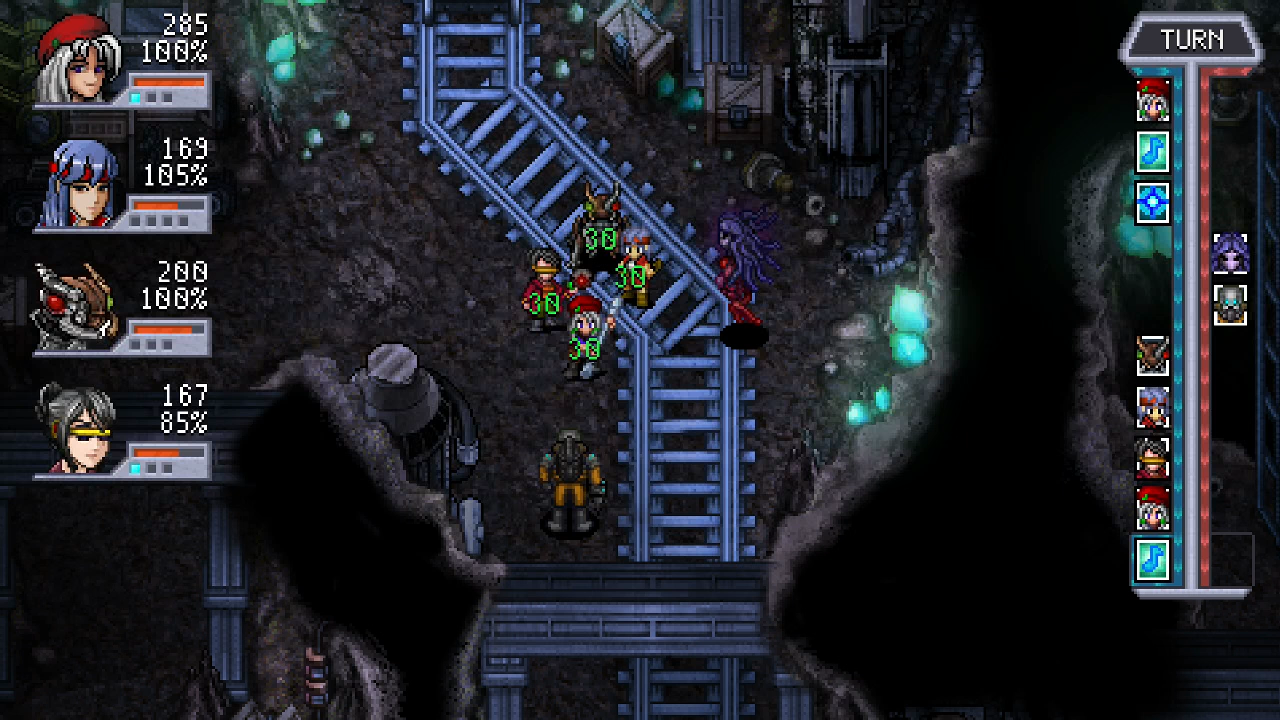
While it’s common for enemies to have thousands or even tens-of-thousands hit points, Alyssa and her teammates cap out with a few hundred at most. In a battle of pure attrition, they will eventually die long before draining their opponent’s much larger hit point meters. This disadvantage may be offset with healing, but their small hit point pools mean even this safeguard has limits. This is where Style comes in.
Any time a party member has accumulated more than 50% Style—and their meters can go higher than 200%, for typically nonsensical RPG reasons—then instead of dying when their hit points go below zero, they get just one more precious turn. They have two options on this final turn: Heal to bring themself back into positive hit point numbers, or add a boost of damage to an ability before dying. This final ability is called a Desperation Attack. Healing the party member is usually the most prudent choice, but these final Desperation Attacks can lead to unexpected down-to-the-wire victories.
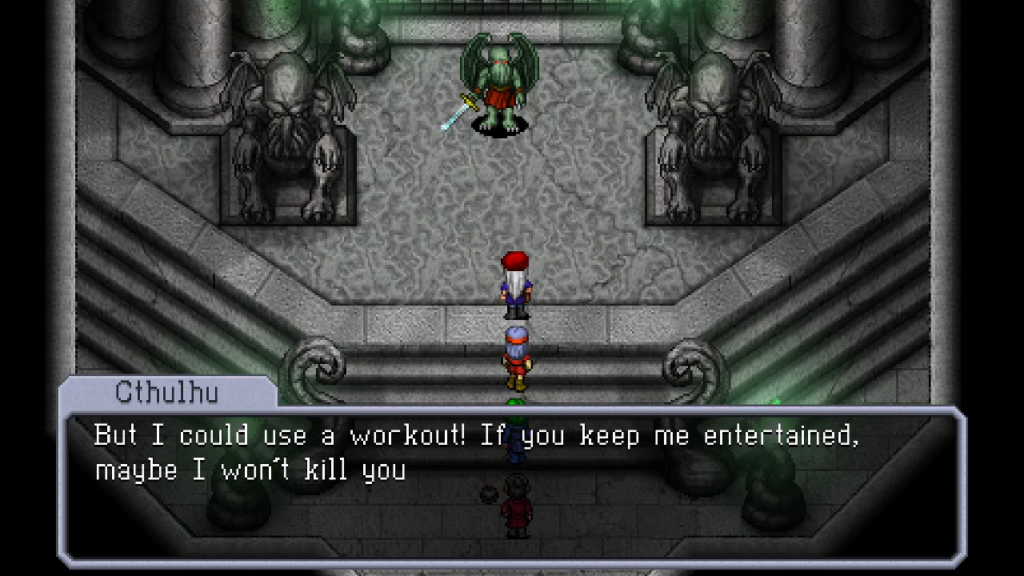
Alyssa and her party use these strategies in battles across three explorable planets. None of the planets are that large, but they make up for their small scale with surprisingly large numbers of places to visit. Whether it’s abandoned buildings in Araneu’s futuristic blighted metropolis, Rhomu’s caves and swamps, or Nuluup’s idyllic cities and majestic waterfalls, every planet is scattered with small dungeons for the party to explore.
Most of these side areas are optional, but taking the time to explore them is worth the effort. Aside from additional battles that pump up the party’s experience levels, many of them contain powerful new equipment which cannot be purchased in stores. Again recalling Chrono Trigger, as I near the climactic encounter with the final boss, each party member has a personal side mission to complete. These missions are often more difficult than anything else I face, but they reward the party with their most fantastic abilities and powers. Completing enough of them makes the final boss laughably easy.
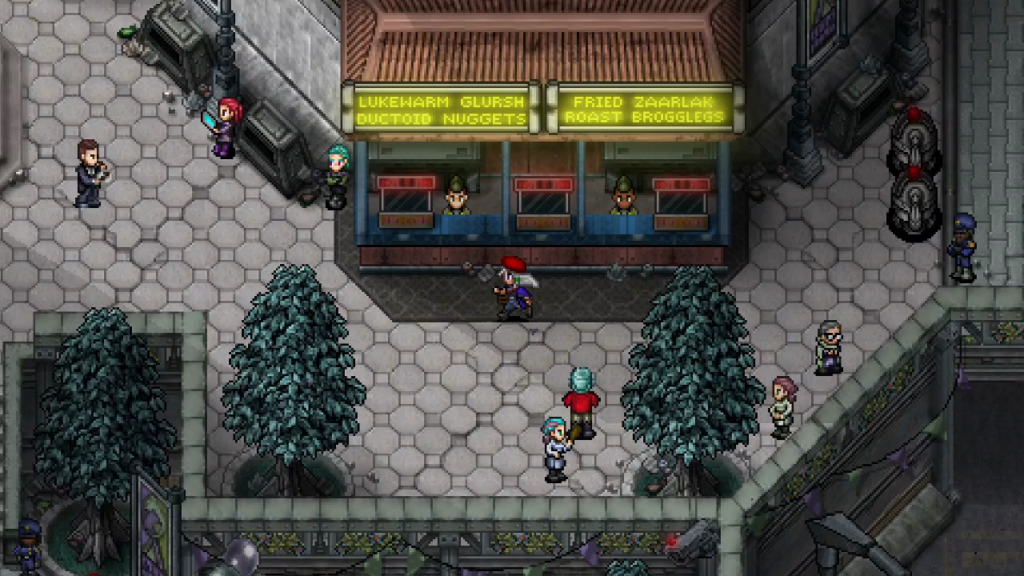
Cosmic Star Heroine is a great combination of old school aesthetic sensibilities and new school design philosophies. It draws me in with graphics evocative of the most influential and enduring RPG classics—chiefly Chrono Trigger and Final Fantasy VI—then surprises me with original and compelling mechanics that emphasize forethought and creative team composition. I experience some frustration with the sheer length of some battles, descending into a tedious malaise, though these moments are usually a result of my lacking strategy. Small, densely explorable worlds reward my thoroughness by creating luxurious power boosts and unexpected new strategies. Any player who learned to love RPGs from the pixelated masterpieces of the 1990s should enjoy Cosmic Star Heroine.